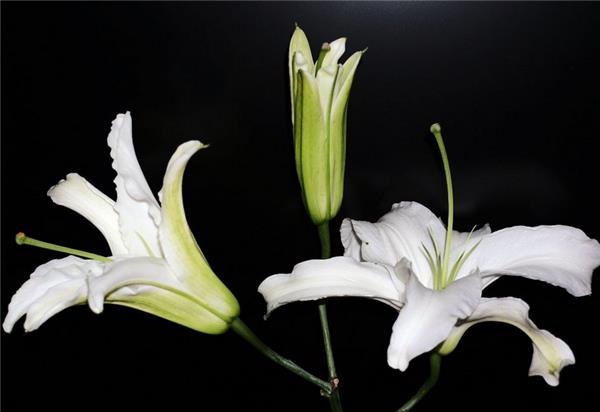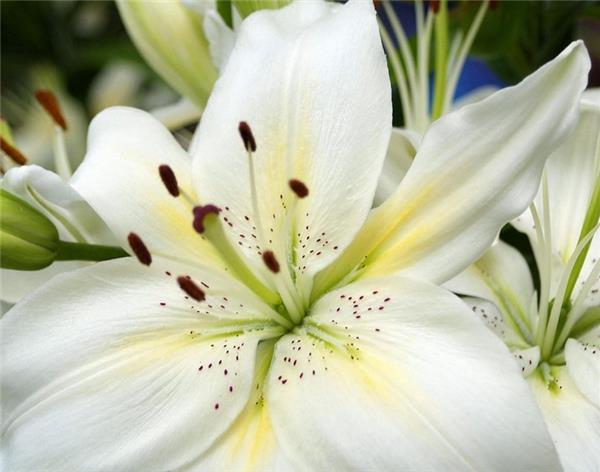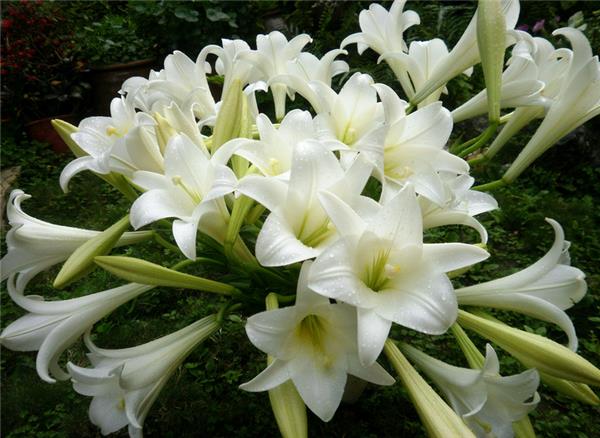How to plant lilies the planting methods of lilies
There are many kinds of lilies, they are colorful and beautiful, and the moral is very good. Many people will keep them at home as a local embellishment, so do you know how to grow lilies? Let's take a look at the planting methods of lilies.

Planting methods of lilies
1. Soil: the pot culture soil of lily should be mixed with rotten leaf soil, sand soil and garden soil at the ratio of 1:1:1, and the pot bottom should be fully mature compost and a small amount of bone powder as base fertilizer.
2, sunshine: lilies like light, if the lack of sunlight, long-term shade will affect the normal flowering. In addition, the flowerpot should be turned once a week during the growing period. Otherwise, the plant is easy to be too long, affecting the appearance.
3. Temperature: the temperature of lily growth and flowering is 16024 ℃, below 5 ℃ or above 30 ℃ almost stops, the plant grows normally above 10 ℃, and stagnates when it exceeds 25 ℃. If the night temperature in winter is lower than 5 ℃ and lasts for 5 to 7 days, flower bud differentiation and bud development will be seriously affected, postpone flowering or even blind flower and flower crack.

4. Watering: watering only needs to keep the pot soil moist, but the growing season and dry weather should be properly watered frequently, and often sprinkle water around the flowerpot to improve air humidity. The potted soil should not be too wet, otherwise the bulbs will rot easily.
5. Fertilization: lilies do not have high requirements for fertilizer, usually at the beginning of spring growth and the early stage of flowering. Some foreign growers believe that lilies need more nitrogen and potassium fertilizer, and should be applied every 10 to 15 days during the growing period, while the supply of phosphate fertilizer should be limited, because too much phosphate fertilizer will cause withered and yellow leaves. Phosphate fertilizer can be increased by 1 to 2 days at flowering stage.
6. Insect pests: the common diseases of lilies are lily mosaic disease, bulb rot, spot disease, leaf blight and so on. When the spot disease occurs, the diseased leaves can be removed and sprayed once with 65% Dysen zinc wettable powder 500 times dilution to prevent spread.
7. Pruning: in order to enrich the bulb, the residual flowers should be cut off in time after flowering, so as to reduce nutrient consumption and affect the blooming of other flowers.

Flower friends will encounter a lot of problems in the process of potted lily planting. The following 10 common questions are sorted out according to the feedback of flower friends, of which the first two are relatively concentrated problems encountered by flower friends.
1, bulb rot: good control of watering, dry rather than wet caused by fungi, stagnant water is the main cause, found that it is often too late, if the bulb disk intact can peel off rotten scales, disinfection and storage, symptoms are changeable, leaf margin yellowing, foot leaves fall off, plant wilting and watering is not relieved, OT, LO, LA and other flower buds blackening, growth stagnation and so on, are very likely to be rotten balls.
2. Elimination of buds: common in Yabai, due to lack of light (continuous rain, put indoors). The phenomenon is that the small bud changes from green to brown, and then scorched, so it will not blossom that year and continue to cultivate the ball well. The main reason for the disappearance of lilies of non-Asian blood is rotten balls.
3. Leaf burning: thick fertilizer, immature fertilizer may damage the root system, make the leaves seriously scorched tip, bud withered, then wash the basin soil with heavy water, turn the basin and change soil if necessary, Dongbai is easier to burn leaves, pay attention to chloride ion in watering and fertilization, fluoride ion should be less (more phosphate fertilizer such as superphosphate, be careful to use).
4. Break: the lily will not send lateral branches if it is treated with the same buds and continue to raise the ball, and the breaking of the terminal bud means that it will not bloom in the same year.
5. Foot leaves yellowing and falling off: the common fault of lily, especially Dongbai and some Yabai, the phenomenon of LA,LO,OT is not obvious, if it is not serious, it basically does not affect the ornamental, it can be used as a reflection of plant health.

6, insect pests: rare, occasional shell insects, Japanese beetles, aphids and other attacks, snails may gnaw flower buds, ground planting should pay attention to protection.
7. Botrytis cinerea: it is common in greenhouses with high humidity, and when it is hot and rainy, mildew-like spots are produced on the leaves, which can be eliminated by fungicide spraying.
8. Out-of-season sprouting: for particularly strong varieties such as iron cannon, it is possible to sprout new buds when they are close to dormancy in winter.
9. No sprouting: this is the situation that beginners fear most. Fortunately, if it is not for rotten balls and rotten buds, this kind of situation is very rare. Often, the cold period experienced by planting balls is not enough to break dormancy. This situation can be dealt with in the refrigerator. There are signs of germination before planting.
10, deformed buds, double flowers: often appear in the cold treatment of the autumn ball, related to the cold treatment time is too long, generally does not affect planting.
Related
- Wuhan Hospital Iron Tree Blooming Result Was Instantly Frightened by the Gardener Master
- Which variety of camellia is the most fragrant and best? Which one do you like best?
- What is the small blue coat, the breeding methods and matters needing attention of the succulent plant
- Dormancy time and maintenance management of succulent plants during dormancy
- Minas succulent how to raise, Minas succulent plant pictures
- What are the varieties of winter succulent plants
- How to raise succulent plants in twelve rolls? let's take a look at some experience of breeding twelve rolls.
- Attention should be paid to water control for succulent plants during dormant period (winter and summer)
- Watering experience of twelve rolls of succulent plants
- Techniques for fertilizing succulent plants. An article will let you know how to fertilize succulent plants.



